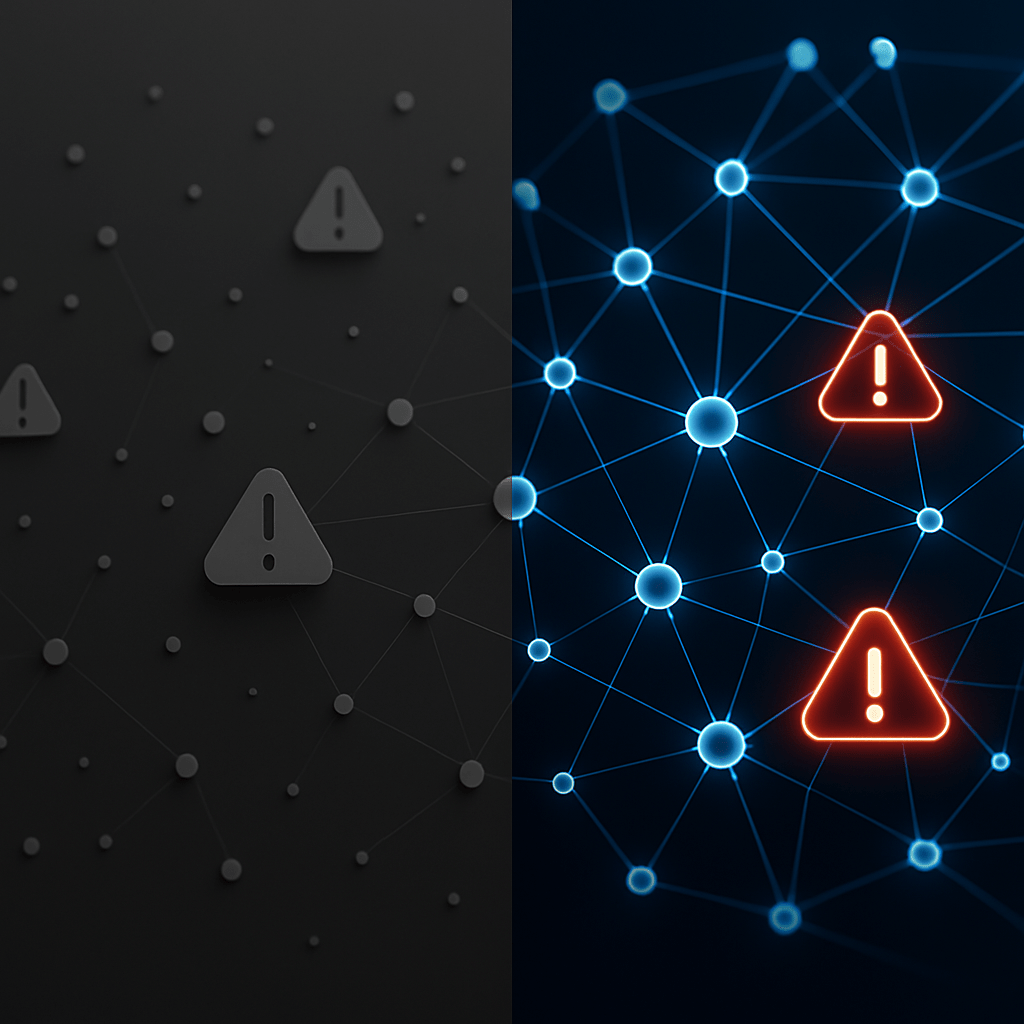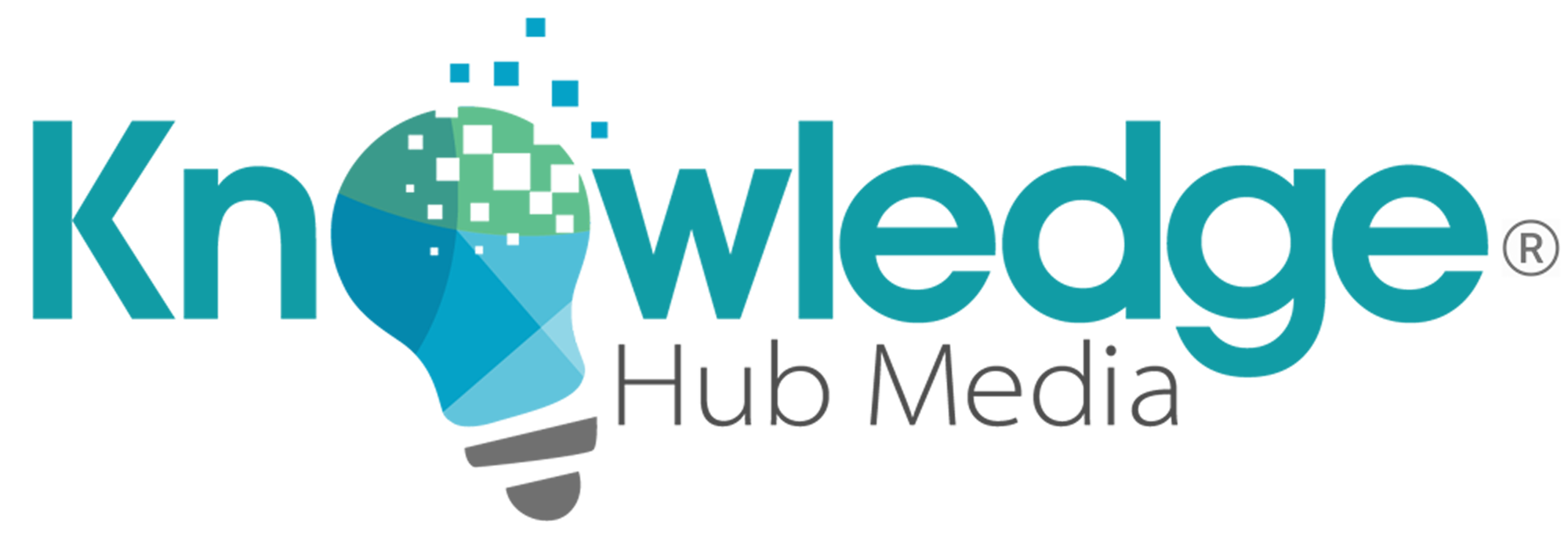
In today’s digital world—where cyber criminals move faster than Kevin Costner driving off the Yellowstone set—businesses can’t afford to blink when it comes to threat detection and response. The sheer volume and velocity of digital threats puts modern organizations in a constant game of high-stakes whack-a-mole, and the last thing a security team wants are blind spots, fragmented insights, or a flood of data with more noise than signal.

So, what’s the secret weapon for navigating this landscape with confidence, speed, and (dare we say) a touch of elegance? An innovative platform that’s quietly redefining what it means to have your digital defenses not just up, but one step ahead of would-be attackers. DomainTools Iris combines comprehensive, real-time threat detection, seamless integration across security ecosystems, and advanced data enrichment; giving cybersecurity professionals the actionable intelligence they crave, and the operational efficiency their organizations demand.
In this exclusive, definitive guide, we’ll talk about what internet intelligence really is, how Iris changes the game for modern businesses, and why we believe you should strongly consider adding it to your threat intel stack.
Ready to future-proof your cyber risk management, and retire your digital whack-a-mole mallet? Let’s get started!
Table of Contents
- Understanding Internet Intelligence and its Business Impact
- DomainTools Iris: Comprehensive Features and Integration Advantages
- Real-Time and Advanced Threat Detection Capabilities
- Addressing Key Challenges: Data Completeness, Reliability, and Integration
- Operational Benefits and Business Use Cases of DomainTools Iris
- Comparing DomainTools Iris with Leading Competitors
- Conclusion
- References
Understanding Internet Intelligence and its Business Impact
What is Internet Intelligence?
Before you can appreciate a platform like DomainTools Iris, it pays to understand the essence of internet intelligence. Think of it as the brainpower behind modern digital risk management: structured insights derived from the continuous collection and analysis of open, deep, and dark web data sources linked to internet-based assets (i.e. domains, DNS records, IP addresses, SSL certificates, and more).

This intelligence spans four key areas of concern. The first, Whois data, is all about who owns each domain, and how it’s managed. Next comes DNS intelligence, which maps the unseen web of domain resolutions. SSL certificate info entails trust indicators and vectors for encrypted threats. And finally, there’s infrastructure reputation, which includes risk scoring and behavioral context.
According to the SANS Institute, “Internet intelligence is the linchpin connecting disjointed technical signals from domains, IPs, and certificates into a coherent story of assets, threats, and vulnerabilities. A robust platform transforms overwhelming noise into prioritized, actionable insight” [1].
Moreover, authoritative public frameworks such as NIST and MITRE ATT&CK recognize internet intelligence as a fundamental component in identifying cyber threat patterns, and aligning response to evolving tactics [2][3].
How Internet Intelligence Enhances Cybersecurity
Why does this data magic matter in the real world? Simply put, bad things happen quickly online. Cyber attackers spin up malicious infrastructure in minutes, launch phishing campaigns with industrial efficiency, and pivot their tactics at the speed of broadband. Internet intelligence empowers defenders to detect threats as soon as new malicious domains go live, monitor internet-facing assets for vulnerabilities/misconfiguration/misuse, and investigate incidents with context-rich data to improve accuracy and reduce response time.
As a SANS analyst recently summarized, “Internet intelligence platforms are the eyes and ears of cyber defense, enhancing everything from early threat visibility to coordinated incident response. The right platform makes the difference between racing after yesterday’s headlines, and shutting down tomorrow’s breach before it starts” [1].
Want more on tactical best practices in this space? The NIST Guide to Cyber Threat Information Sharing is well worth a read if you have the time to spare.
DomainTools Iris: Comprehensive Features and Integration Advantages
Core Functionalities: Iris Detect, Enrich, and Investigate
DomainTools Iris isn’t just another pretty dashboard; it’s a modular, API-fueled suite designed to deliver results, not just reports. Whether tackling global threat monitoring or bespoke brand protection, Iris nails three essentials…

Iris Detect: Real-time monitoring of emergent domain and internet infrastructure changes, capable of recognizing phishing, fraud, or suspicious behavior within minutes of a domain going live. ESG’s economic benefits study highlights how, on average, Iris Detect spots threats three days earlier than industry-standard blocklists, and uncovers 68% more malicious domains than other tools [4].
Iris Enrich: The engine for transforming raw internet fingerprints into rich, contextual intelligence. By combining Whois, active and passive DNS, SSL certificate chains, and proprietary risk scoring, analysts can pivot swiftly in investigations. Customers cited by ESG in a recent article report measurable operational benefit, and quick integration that doesn’t disrupt existing workflows, rare praise in the land of enterprise software [4].
Iris Investigate: Purpose-built for forensic scrutiny, Investigate provides detailed infrastructure mapping and threat actor profiling, resulting in up to a 79% boost in efficiency [4].
Seamless Integration and Scalability in Enterprise Security Ecosystems
The modern security stack isn’t so much a tower as a sprawling cityscape—SIEMs, SOAR platforms, XDR, TIPs, and a rogue’s gallery of other acronyms that I can’t remember off the top of my head. Fragmentation is the enemy. DomainTools Iris turns this challenge into a point of pride with flexible API endpoints and SDKs for quick integration with SIEMs like Splunk and SOAR systems. It also offers rapid deployment models—cloud, hybrid, or on-premises—with detailed product guides and official documentation [5], as well as compatibility across diverse operating environments; enabling everything from automated investigations to hand-rolled analyst queries.

As one DomainTools engineer explained in a recent product team blog, “We designed Iris APIs and data integrations to play nicely with everything from legacy log management to bleeding-edge automation workflows. It’s about amplifying intelligence, not adding another data silo.”
The result? Reduced operational friction and smooth scaling—whether you’re supporting a lean SOC or an enterprise sprawling across global geographies. ESG and IDC white papers validate these integration benefits, noting improved cross-tool visibility and “time to value” [4][6].
For security leaders seeking best practices, CISA Cybersecurity Best Practices covers the top strategies for robust, sustainable defense architectures.
Real-Time and Advanced Threat Detection Capabilities
Leveraging Machine Learning for Enhanced Risk Detection

Gone are the days when rules-based detection could keep up with the internet’s never-ending parade of suspicious domains and infrastructure. Advanced threat actors adapt with uncanny speed, and your platform needs to learn as fast as they do. DomainTools Iris applies sophisticated machine learning models to score risk based on over 1,500 data points per entity, continuously adapt to new indicators and attack patterns, and recognize subtle domain infrastructure shifts that signal emerging threats.
This isn’t “just add AI” marketing fluff—Lumifi Cybersecurity and technical whitepapers emphasize how these models improve detection precision, and proactively reduce false negatives, even as threat tactics evolve [7]. Real-world case studies validate measurable reductions in mean time to detect/respond, and significant improvements in threat investigation outcomes [4][6].
Real-Time Monitoring and Response Benefits
Seconds count in cybersecurity. Iris’s architecture is built for continuous, real-time data ingestion and analytics—detecting malicious behavior as the infrastructure is created, not after the fact. As validated by IDC’s research, organizations using Iris have been able to identify threats 82% faster in some cases, proactively surface almost three times as many threats, and improve investigation team productivity by over 50% [6].
Addressing Key Challenges: Data Completeness, Reliability, and Integration
Challenges with Fragmented and Incomplete Threat Data
Here’s the reality, incomplete or outdated domain threat data leads to missed alerts, false negatives, and response delays—opening the door for attackers who thrive on blind spots. As shown in peer-reviewed cybersecurity research, enrichment and imputation of missing cyber threat signals dramatically improve predictive power in security operations [8]. Azure Sentinel’s threat intelligence discussions further stress the perils of stale datasets, and the necessity for comprehensive coverage [9].
Failure to unify fragmentary data streams creates not only operational headaches, but also serious risks. As one data scientist noted, “Relying on incomplete threat data is like locking your front door but leaving the windows wide open.”
Solutions Provided by DomainTools Iris for Data Reliability

Iris tackles these challenges head-on. Not only does it provide multi-source data fusion (pulling from Whois, DNS, SSL, and more), but it further offers proprietary enrichment and risk scoring to ensure accuracy, along with near-instantaneous updates—over 106 million domains observed in 2024 alone, averaging 289,000 daily [10]!
The result is a 68% improvement in malicious domain identification, and the critical ability to see threats that others miss [4]. With such comprehensive domain intelligence, security teams no longer have to choose between coverage and context.
Integration Best Practices for Seamless Security Operations
A platform is only as valuable as its ability to work well with others. To that end, Iris’s API and integration toolkit is engineered for flexibility, ease, and speed. Standardized data models make mapping to SIEM, SOAR, and XDR platforms straightforward, while detailed product documentation and use-case blueprints reduce onboarding time significantly. Official NIST guidance on integration is well reflected in Iris’s approach—prioritizing clear communication, standardized data formats, and real-time interoperability [2].
Gartner and Forrester analysts also underscore the importance of such best practices in scaling enterprise security operations, making Iris a future-proof choice for organizations aiming to grow securely [11][12]. For field-proven integration case studies, CISA State Cybersecurity Governance Case Studies offers further insight.
Operational Benefits and Business Use Cases of DomainTools Iris
Enhanced Threat Detection and Investigation Efficiency
They say time is money. So let’s talk about money, and let’s talk about time, and let’s put some important numbers on the board in the process. Organizations utilizing DomainTools Iris realized a return on investment (ROI) of up to 1,256% for OEM partners, and 313% over three years for general deployments (as measured by the Enterprise Strategy Group and IDC respectively [4][6]).
And according to Aviv Kaufmann, ESG’s Principal Economic Validation Analyst, recent studies show that Iris detected threats an average of three days earlier than industry-standard alternatives, increasing productivity and reducing organizational risk [4]. CrowdStrike’s data sheets further validate improved threat hunting velocity and operational resilience [13].
Brand Protection and Risk Mitigation Use Cases

Brand equity takes years to build—but a single domain spoofing, phishing scam, or fraudulent web presence can undo that overnight. DomainTools Iris empowers organizations to:
- Proactively monitor and safeguard brands against malicious domain registrations.
- Uncover and disrupt attacker infrastructure that leverages company names or trust signals.
- Enable rapid mitigation strategies using enriched intelligence and automated takedown workflows [10].
Customer interviews in a recent IDC study reveal direct success stories: “We have faster incident response and better visibility into threat intelligence with DomainTools. It enhances our overall business efficiency. Security doesn’t directly drive revenue, but business units can be more efficient if they can stop problems before they generate expenses. I know for a fact that we have reduced disruptions. Whole business units have avoided incidents that could affect one to two thousand people” [6].
Scalability Across Enterprise Sectors and Sizes
Whether you’re a lean security team at a fintech disruptor, or part of a sprawling global enterprise, Iris adapts to your use case with ease. Not only does it supports cloud, on-prem, and hybrid deployments, but it also offers custom scaling models and integration routines to match enterprise needs. It’s been validated by IDC and ESG analysts for its adaptability and operational resilience, in sectors from finance, to SaaS, to critical infrastructure [4][6].
Comparing DomainTools Iris with Leading Competitors
DomainTools Iris vs Mandiant Advantage
When stacked against well-known platforms like Mandiant Advantage, Iris stands out for its superior data enrichment, early threat detection, and seamless integrations. While Mandiant brings strong incident response and XDR capabilities to the table, reviewers note a relative lack of depth in real-time enrichment and integration specifics. PeerSpot analyses point out that Mandiant’s buyer-oriented summaries and community review focus do not provide the technical or operational detail that cybersecurity professionals demand [14]. Conversely, Iris’s ability to surface threats three days sooner and enrich data from multiple sources yields earlier, more actionable insights—a critical edge.
DomainTools Iris vs IntSights Cyber Intelligence
IntSights Cyber Intelligence is praised for external threat feeds and peer review-based sentiment, but lacks the comprehensive feature depth of Iris—particularly in advanced enrichment and smooth integration. As shown in PeerSpot comparisons, IntSights often focuses on broad community reviews and high-level overviews, limiting its usefulness for practitioners needing deep data and practical workflow guidance [15].
Iris, in contrast, leverages authoritative expert validations, independent analyst reports, and detailed use cases that translate directly to day-one operational benefits for enterprises.
DomainTools Iris and Other Notable Competitors: Trustwave, Forcepoint, CrowdStrike
The broader market boasts heavyweight contenders like Trustwave, Forcepoint, and CrowdStrike. Each holds market share in certain facets of threat intelligence and detection. Yet, competitor analyses from 6Sense and industry review excerpts consistently reveal gaps…

Trustwave: Noted for managed security but lacks detailed discussion of real-time enrichment or technical integration [16].
Forcepoint: Offers advanced protection but, from available content, seems less comprehensive in data fusion and enterprise deployment options [17].
CrowdStrike: Market leader in EDR and cloud security, but public resource coverage lacks hands-on comparative depth for domain intelligence capabilities [18].
This is precisely where Iris excels—with validated, multi-layered enrichment; demonstrable, independent ROI; seamless scalability; and best-in-class integration flexibility.
Put simply, Iris brings the “whole package,” covering what competitor platforms only mention in passing, if even at all.
Conclusion
Here’s the moral of the story. In a world where cyber threats change by the minute and operational efficiency is the name of the game, DomainTools Iris Internet Intelligence is the platform industry experts and blue-chip enterprises rely on to stay ahead.
What makes it the best? For starters, it’s unmatched breadth in real-time threat detection and forensic data enrichment. Then there’s its crucial ability to seamlessly plug into sprawling, complex security ecosystems (no more “yet another silo” headaches), and its machine learning-driven risk scoring, which delivers incredible accuracy and predictive power. Next comes true scalability, flexibility, and future-proof assurance for organizations of every size. And last, but far from least, is the fact that it boasts quantifiable efficiency and risk reduction, proven by authoritative third-party research and real customer testimonials.
If you’re serious about cybersecurity, threat detection, or even just getting a good night’s sleep knowing your defensive posture is reliable and battle-tested, it’s time to take a closer look at Iris.
References
- SANS Institute. (N.D.). Internet intelligence: The threat hunting advantage. SANS Institute. Retrieved from https://www.sans.org/internet-intelligence
- National Institute of Standards and Technology. (2016). Guide to Cyber Threat Information Sharing (NIST SP 800-150). U.S. Department of Commerce. Retrieved from https://nvlpubs.nist.gov/nistpubs/specialpublications/nist.sp.800-150.pdf
- MITRE Corporation. (N.D.). ATT&CK®: A Knowledge Base for Adversary Tactics and Techniques. MITRE. Retrieved from https://attack.mitre.org
- Kaufmann, A. (2023). The Economic Benefits of DomainTools Internet Intelligence. Enterprise Strategy Group. Retrieved from https://www.domaintools.com/resources/white-papers/esg-economic-benefits-of-domaintools-internet-intelligence/
- DomainTools. (N.D.). DomainTools Iris: Official Documentation and API Guides. DomainTools. Retrieved from https://www.domaintools.com/products/platform/iris-detect/
- Kissel, C. & Marden, M. (2022). The Business Value of Threat Intelligence with DomainTools. IDC White Paper. Retrieved from https://www.domaintools.com/wp-content/uploads/IDC-Value-Threat-Intelligence-Identify-Threats-Faster-With-DomainTools-Whitepaper.pdf
- Lumifi Cybersecurity. (N.D.). Advanced Threat Detection using AI and Machine Learning. Lumifi Cybersecurity. Retrieved from https://www.lumificyber.com/solutions/advanced-threat-detection/
- Alsmadi, I., Xu, S., & Alhassan, M. (2019). Imputation techniques for cyber threat intelligence data: A case study using machine learning. Cybersecurity, 2(1). SpringerOpen. DOI: 10.1186/s42400-018-0016-5. Retrieved from https://cybersecurity.springeropen.com/articles/10.1186/s42400-018-0016-5
- Microsoft Azure Sentinel Community. (N.D.). Threat Intelligence Completeness Discussions. GitHub. Retrieved from https://github.com/Azure/Azure-Sentinel/issues/12309/linked_closing_reference
- DomainTools. (2024). Inaugural Domain Intelligence Report. DomainTools. Retrieved from https://www.domaintools.com/dti-inaugural-domain-intelligence-report/
- Gartner. (N.D.). Market Guide for Security Threat Intelligence Products and Services. Gartner. Retrieved from https://www.gartner.com/reviews/market/cyber-threat-intelligence
- Forrester Research. (N.D.). Cyber Threat Intelligence Market Overview. Forrester. Retrieved from https://www.forrester.com/report/cyber-threat-intelligence-market
- CrowdStrike. (2022). DomainTools Iris Threat Intelligence Data Sheet. CrowdStrike. Retrieved from https://www.crowdstrike.com/wp-content/uploads/2022/09/domaintools-iris-threat-intelligence-crowdstrike-store-data-sheet.pdf
- PeerSpot. (2024). DomainTools Iris vs Mandiant Advantage comparison. PeerSpot. Retrieved from https://www.peerspot.com/products/comparisons/domaintools-iris_vs_mandiant-advantage
- PeerSpot. (2024). DomainTools Iris vs IntSights comparison. PeerSpot. Retrieved from https://www.peerspot.com/products/comparisons/domaintools-iris_vs_intsights
- 6Sense. (2024). DomainTools – Market Share, Competitor Insights in Threat Detection and Prevention. Retrieved from https://6sense.com/tech/threat-detection-and-prevention/domaintools-market-share
- 6Sense. (2024). Forcepoint Triton APX Overview. Retrieved from https://6sense.com/tech/threat-detection-and-prevention/domaintools-market-share
- 6Sense. (2024). CrowdStrike Falcon Overview. Retrieved from https://6sense.com/tech/threat-detection-and-prevention/domaintools-market-share
